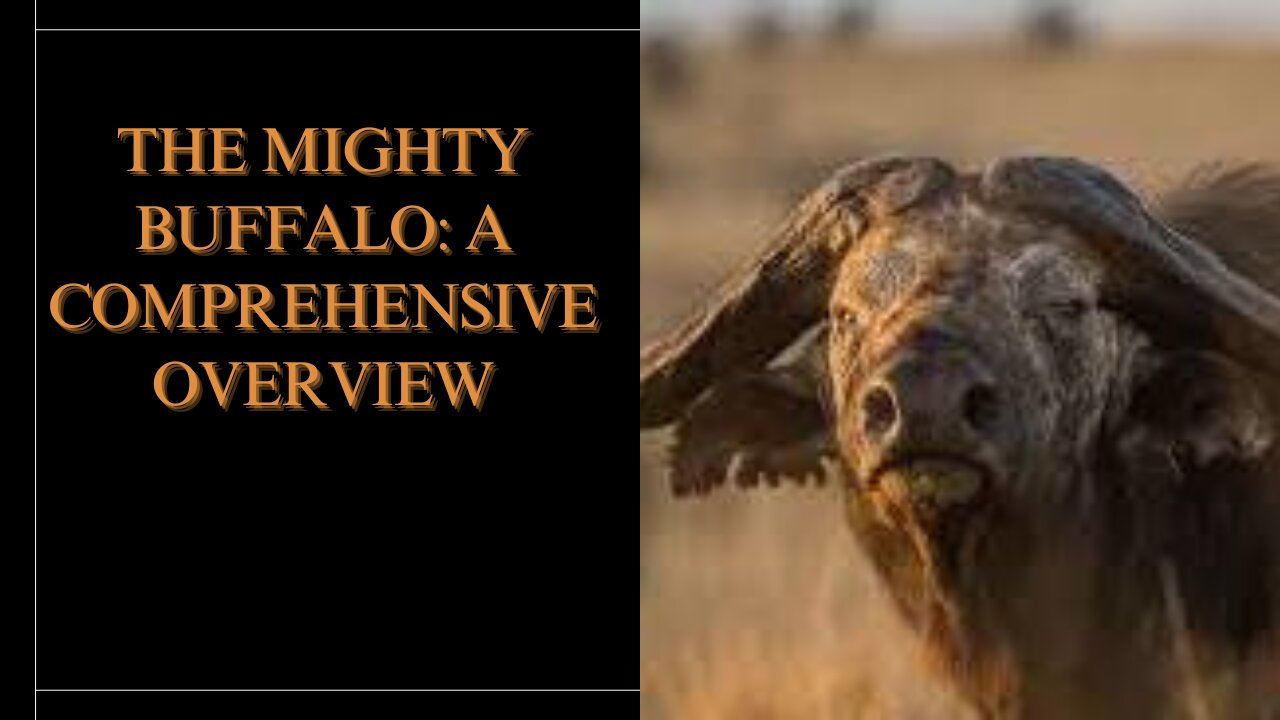Premium Only Content

Understanding the Majestic Buffalo | History, Habitat, and Conservation!
Your Quaries:-
The buffalo, often synonymous with the American bison, is an iconic symbol of the Great Plains and an integral part of North America's natural and cultural heritage. These majestic creatures, once numbering in the millions, roamed vast grasslands, playing a crucial role in the ecosystem by maintaining the balance of plant and animal life. The buffalo holds significant historical and cultural importance, especially for Indigenous peoples, for whom it was a source of food, clothing, and tools, as well as a central element in spiritual and social practices.
Buffalo are characterized by their massive heads, humped shoulders, and shaggy coats, adapting them to a range of environments from prairies to forests. Their social structure is fascinating, with herds often comprising extended family groups led by older females. These herds exhibit complex behaviors, including cooperative care of the young and sophisticated communication methods.
However, the buffalo's history is also marked by near-extinction. In the 19th century, extensive hunting and habitat destruction reduced their population to a few hundred individuals. Conservation efforts in the 20th century, led by Indigenous communities, conservationists, and government agencies, have been pivotal in bringing buffalo back from the brink of extinction. Today, buffalo conservation focuses on habitat restoration, genetic diversity, and sustainable management practices.
Understanding the history, habitat, and conservation efforts surrounding buffalo is crucial for their continued survival and the health of the ecosystems they support. By appreciating these magnificent animals, we can better advocate for their protection and the preservation of our natural heritage.
-
 10:13
10:13
ARFCOM Reviews
15 hours ago $4.14 earnedIntegrally Suppress Your PCC with Novox X-SD
13.9K2 -
 5:19
5:19
Rena Malik, M.D.
23 hours ago $2.88 earnedDoctor explains Who has a More Active Sex Drive - Men vs. Women?
13.7K16 -
 1:56:44
1:56:44
MG Show
21 hours agoEpstein, Comey, Brennan: It’s ALL Connected; Pandora’s Box Premium
26.7K24 -
 3:43:36
3:43:36
megimu32
12 hours agoOFF THE SUBJECT: FAFO Friday w/ Pepkilla
80.4K13 -
 2:16:11
2:16:11
I_Came_With_Fire_Podcast
16 hours agoCCP INFLUENCE IN U.S. | DOXXING ICE AGENTS | PAY YOUR OWN LOAN
47.5K16 -
 15:30
15:30
BlackBeltBarrister
17 hours ago $11.30 earnedThey will screw us all with this!!
64.2K27 -
 2:04:22
2:04:22
TimcastIRL
12 hours agoDan Bongino AND Kash Patel THREATEN TO QUIT FBI Over Botched Epstein Release | Timcast IRL
308K294 -
 5:10:31
5:10:31
Turning Point USA
16 hours agoSAS IS LIVE! Pete Hegseth, Don Jr., Tucker Carlson, Charlie Kirk and more... in Tampa, FL!
915K100 -
 1:54:35
1:54:35
Glenn Greenwald
18 hours agoUN Gaza Investigator Francesca Albanese on US Sanctions Against Her; Plus: Glenn Takes Your Questions on Trump's Pressure on Brazil, Sam Harris, Bill Ackman, and More | SYSTEM UPDATE #485
108K61 -
 58:37
58:37
BonginoReport
22 hours agoElon’s Petty Move Threatens GOP’s Bright Future - Nightly Scroll w/ Hayley Caronia (Ep.88)
123K123